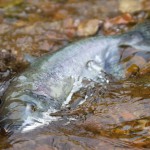 U.S. Sen. Mark Begich held a telephonic town hall on Thursday night, where he listened and answered questions about whether or not the country should strike Syria. Many of the questions asked were about the costs of such military strikes. Begich said that he has yet to get a full accounting of those costs.
U.S. Sen. Mark Begich held a telephonic town hall on Thursday night, where he listened and answered questions about whether or not the country should strike Syria. Many of the questions asked were about the costs of such military strikes. Begich said that he has yet to get a full accounting of those costs.
Congress is expected to vote next week on a resolution to authorize military action in Syria. Begich said that in order to vote for the resolution, among other things, he would need a to know more about the costs, and that they couldn’t come from money already allocated to existing programs.
The country, as well as members of Congress, are increasingly opposing such action, in part because of the money involved. Below is a taste of what we have spent recently in conflicts in the Middle East, and some of the estimates of what we would spend if we were to go to Syria:
- The wars in Iraq and Afghanistan have cost U.S. taxpayers more than $1.2 trillion, according to the Congressional Research Service. When long-term expenses such as health care for wounded veterans is included, that number is estimated to climb to $2.2 trillion.
- In 2002, the U.S. Office of Management and Budget estimated that the cost of invading Iraq was going to be between $50 to $60 billion.
- Military operations in Libya in 2011 cost about $1.1 billion, according to the Pentagon.
- A single Tomahawk missile costs anywhere from $1 million to $1.5 million.
- Operating a carrier strike group and its aircraft during extended operations, at high tempo around the clock, costs about $40 million a week.
- The cost of operating guided missile destroyers is about $2 million a week each. There are now four U.S. destroyers operating in the Eastern Mediterranean.
- In July, Chairman of the Joint Chiefs of Staff General Martin Dempsey estimated that a military intervention in Syria would require hundreds of warplanes, ships and submarines and that “the costs would be in the billions.”
- Dempsey also said that establishing a no-fly zone over parts of Syria would cost at least $500 million to begin with and could cost $1 billion per month to maintain.
- Securing chemical weapons sites that the US claims the Syrian government has would cost more than $1 billion a month, according to the top general.
- Without Syria, the Pentagon is on pace to spend about $574 billion total this year. Of that, about $86 billion was spent on the Afghanistan War.
- As of March, more than 190,000 people have been killed in the 10 years since the war in Iraq began, including 4,488 U.S. service members and at least 3,400 U.S. contractors.
Contact Amanda Coyne at amandamcoyne@yahoo.com















